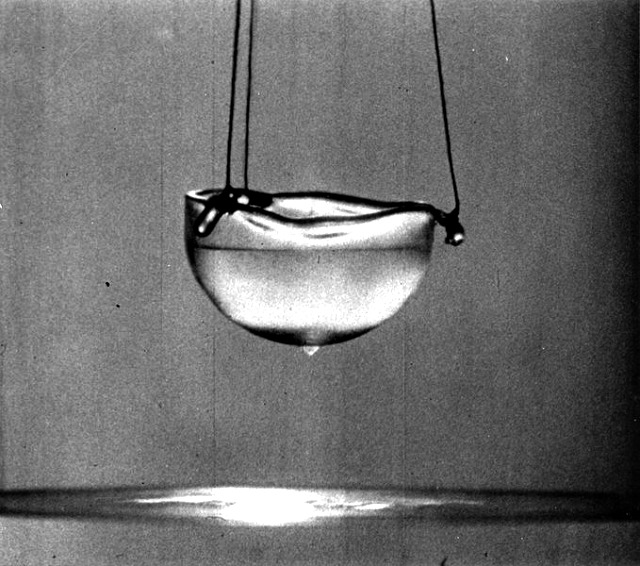Superfluidity in Low
Temperature Physics
When cooling liquid helium
down to -270 degrees Celsius, only a few degrees above absolute zero*, quantum
mechanical effects begin to take place. At this
temperature, liquid helium becomes a 'superfluid', more
precisely, a liquid that flows with no viscosity. It
has other strange characteristics, including climbing the
edges (seemingly against gravity) of a container and
remaining still when it is in a spinning container.
The liquid helium goes through a transformation called the
Bose-Einstein condensation. During this phase, the
particles within the fluid cease to act separate, and
begin to act as one big particle. In other words,
the atoms of the fluid act in unison, creating quantum
mechanical effects.
|
*Absolute zero
refers to the temperature at which no heat energy
remains within a material; fundamental particles
exhibit little to no vibrational motion. This
point is essentially impossible to reach.
Below:
Photo of a small glass container holding an amount of superfluid helium. Fluid can be seen dripping from the bottom of the container. The fluid actually climbs over the walls of the container and drips off the bottom, back into the rest of the fluid.  http://ipfactly.com/liquid-helium-superfluid-state/ |
Table of Contents Introduction Kapitsa Biography Later Life and Achievements Rollin Film Bibliography |